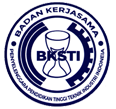Case Study of 250 ML Glass Drinking Water Product Defects with Lean Six Sigma and FMEA
Abstract
Keywords
Full Text:
PDFReferences
Afandi, N. K., & Sulistiyowati, W. (2022). Analisa Peningkatan Kualitas Produk Di CV. XYZ Dengan Menggunakan Metode Six Sigma. Prosiding SEMNAS INOTEK (Seminar Nasional Inovasi Teknologi), 6(1), 191–196.
Alamsyah, I., & Rochmoeljati, R. (2023). Product Quality Analysis Safety Belt to Reduce Disability Using Six Sigma Method and Repair with Kaizen in PT XYZ. IJIEM (Indonesian Journal of Industrial Engineering & Management), 4, 387–394. https://doi.org/10.22441/ijiem.v4i3.21025
Andhika, K., & Jatra, I. M. (2022). Brand Image Mediates the Effect of Product Quality on Consumer Loyalty. American Journal of Humanities and Social Sciences Research. Www. Ajhssr. Com.
Escobar, C. A., Macias, D., McGovern, M., Hernandez-de-Menendez, M., & Morales-Menendez, R. (2022). Quality 4.0–an evolution of Six Sigma DMAIC. International Journal of Lean Six Sigma, 13(6), 1200–1238.
Fitriani, E., & Rochmoeljati, R. (2023). Waste Analysis of Sugar Production Process Using Lean Six Sigma Method. IJIEM (Indonesian Journal of Industrial Engineering & Management), 4, 406–417. https://doi.org/10.22441/ijiem.v4i3.21226
Gaspersz, V. (2007). Lean six sigma. Gramedia Pustaka Utama.
Gaur, K. (2019). Systematic and quantitative assessment and application of FMEA and Lean six sigma for reducing non productive time in operation theatre of a Tertiary Care Hospital in a metropolis. Perioperative Care and Operating Room Management, 16, 100075.
Grace, E., Girsang, R. M., Simatupang, S., Candra, V., & Sidabutar, N. (2021). Product quality and customer satisfaction and their effect on consumer loyalty. International Journal of Social Science, 1(2), 69–78.
Ishak, A., Siregar, K., & Naibaho, H. (2019). Quality control with Six Sigma DMAIC and grey failure mode effect anaysis (FMEA): a review. IOP Conference Series: Materials Science and Engineering, 505(1), 012057.
Lina, R. (2022). Improving Product Quality and Satisfaction as Fundamental Strategies in Strengthening Customer Loyalty. AKADEMIK: Jurnal Mahasiswa Ekonomi & Bisnis, 2(1), 19–26.
Mittal, A., Gupta, P., Kumar, V., Al Owad, A., Mahlawat, S., & Singh, S. (2023). The performance improvement analysis using Six Sigma DMAIC methodology: A case study on Indian manufacturing company. Heliyon, 9(3).
Muchsinin, M. Y., & Sulistiyowati, W. (2022). Quality Control Analysis To Reduce Product Defects With The Lean Six Sigma Method And Fault Tree Analysis. Procedia of Engineering and Life Science, 3.
Novitasari, R., & Iftadi, I. (2020). Analisis Lean Manufacturing untuk minimasi waste pada proses door PU. Jurnal INTECH Teknik Industri Universitas Serang Raya, 6(1), 65–74.
Ridwan, A., Arina, F., & Permana, A. (2020). Peningkatan kualitas dan efisiensi pada proses produksi dunnage menggunakan metode lean six sigma (Studi kasus di PT. XYZ). TEKNIKA: Jurnal Sains Dan Teknologi, 16(2), 186–199.
Setyawan, S. (2023). Literature Review: Penerapan Lean Six Sigma Pada Manufaktur Industri. Prosiding Sains Dan Teknologi, 2(1), 406–419.
Taufik, A., Santoso, S., Fahmi, M. I., Restuanto, F., & Yamin, S. (2022). The role of service and product quality on customer loyalty. Journal of Consumer Sciences, 7(1), 68–82.
Thakur, V., Akerele, O. A., Brake, N., Wiscombe, M., Broderick, S., Campbell, E., & Randell, E. (2023). Use of a Lean Six Sigma approach to investigate excessive quality control (QC) material use and resulting costs. Clinical Biochemistry, 112, 53–60.
DOI: http://dx.doi.org/10.22441/ijiem.v6i1.27540
Refbacks
- There are currently no refbacks.

This work is licensed under a Creative Commons Attribution-NonCommercial 4.0 International License.
IJIEM - Indonesian Journal of Industrial Engineering & Management
Program Pascasarjana Magister Teknik Industri Universitas Mercu Buana
Kampus Menteng - Gedung Tedja Buana, Floor 4th
Jl. Menteng Raya No. 29 Jakarta Pusat- Indonesia
Tlp.: +62 21 31935454 Fax: +62 21 31934474
http://publikasi.mercubuana.ac.id/index.php/ijiem
Email: [email protected]

This work is licensed under a Creative Commons Attribution-NonCommercial 4.0 International License.
The journal is indexed by:





1.png)
.png)
.png)
.png)







